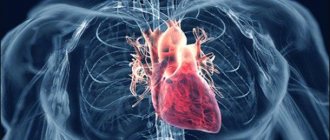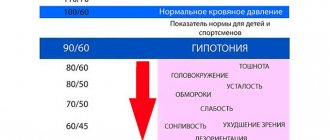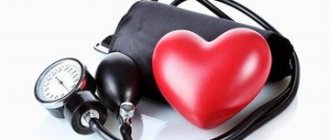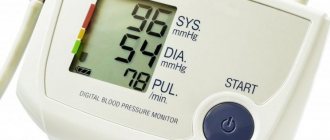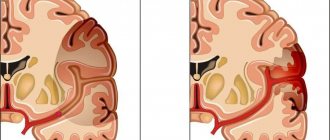Nausea with pain in the head, often leading to vomiting, is an alarming symptom of a jump in blood pressure, signaling the development of a hypertensive crisis or a complication of hypotension.
Nausea with pressure occurs both with hypertension and with a sharp decrease in blood pressure.
It is necessary to find out what the patient’s blood pressure is if he is vomiting in order to begin the correct treatment.
Relationship between blood pressure and vomiting
The presence of vomiting with high or low blood pressure indicates poor vascular tone and disruptions in the autonomic nervous system.
Increased pressure disrupts cerebral circulation, stimulates the center of the brain responsible for the gag reflex, thereby provoking nausea and pain.
Hypertension increases the production of adrenaline. This increases the effect of blood on the walls of blood vessels, which causes a malfunction of the sympathetic nervous system, nausea, and vomiting.
With low blood pressure, the nutrition of the cells of internal organs is disrupted, hypoxia begins, and circulatory disorders are observed. All this leads to painful sensations, increased fatigue, loss of strength, and a constant feeling of nausea.
Thus, with an increase in blood pressure, vomiting symptoms depend on a jump in blood pressure, and a decrease in blood pressure is associated with a lack of nutrition of brain cells.
Any overexertion, physical or emotional, can provoke a feeling of nausea and cause vomiting.
The development of hypertension is facilitated by changes in the condition of blood vessels and disruption of their normal tone.
With age, due to poor lifestyle, diseases of the cardiovascular system, and other pathologies, blood vessels lose their elasticity and fatty plaques accumulate on them, impeding normal blood flow.
The human heart moves blood through the vessels under a certain pressure. In a healthy person, normal blood pressure allows the entire body to function smoothly.
With pathological disorders of the vascular system, blood flow is inhibited in areas of fat deposits, putting increased pressure on the vessels.
At the same time, the cells of internal organs, including brain cells, do not receive adequately oxygenated blood necessary for normal life.
Unpleasant symptoms in a patient with hypertension - nausea, vomiting - are a signal to urgently call an ambulance. A feeling of nausea is a symptom of an upcoming hypertensive crisis.
How to get rid of headaches with low blood pressure?
Headache and pathologically low blood pressure are interconnected; to eliminate pain, sometimes it is enough to normalize the blood flow.
Taking medications
Low blood pressure and headaches are well eliminated with the help of drugs containing caffeine. This could be Citramon, Askofen, Pentalgin, Panadol Extra. Gutron, a drug that affects the nervous system, helps improve vascular tone and maintain normal blood pressure levels.
Often people with chronic hypotension are prescribed a tincture of Eleutherococcus extract. Despite the fact that the product contains alcohol, it can be drunk by pregnant women and teenagers. The tincture restores normal blood flow for a long time, improves vascular tone, but you also need to drink this medicine for a long period of time, at least two weeks.
Folk remedies
Why do nausea occur?
Blood pressure surges do not occur without a reason. Doctors conditionally divide these factors into three main blocks:
- Prolonged overload of the body. Many people mercilessly exploit their body, not allowing it to fully recover, do not follow a work-rest schedule, and do not get enough sleep for significant periods of time. In addition, the constant stress that abounds in the life of a modern person also has a detrimental effect on health. Under such conditions, the body’s cardiovascular system reacts with malfunctions and surges in blood pressure.
- Bad habits. People who do not lead a healthy lifestyle are especially susceptible to changes in blood pressure. Alcohol, drugs, stimulants, smoking, excess weight, overeating, physical inactivity - everything that destroys health also causes problems with normal blood circulation.
- Weather conditions, their sudden changes, increase or decrease in atmospheric pressure. This is another factor that, unlike the previous ones, a person cannot influence.
As the body naturally ages and chronic illnesses develop, a person becomes more and more susceptible to changes in atmospheric pressure and sudden changes in air temperature.
The body reacts violently with hypertensive attacks, releases adrenaline into the blood, the pulse quickens, and panic attacks are possible. The tension of the sympathetic nervous system increases many times over, which provokes a gag reflex.
These unpleasant sensations indicate problems with blood circulation in the brain. Swelling forms on the cerebral cortex, which, due to spasm, puts pressure on the vomiting center.
Even with hypotension, a person may experience chills, increased sweating, gagging and pain in the temporal lobes.
Therefore, it is necessary to immediately find out why the head may feel dizzy and hurt, for what reason the patient feels sick, and at what pressure the headache occurs.
With high blood pressure
Similar symptoms of jumps in blood pressure, both downward and upward, as well as nausea in other diseases (for example, poisoning) can be misleading, taking away valuable time.
The time factor is especially significant with high blood pressure. Timely assistance can prevent a stroke and its irreversible consequences. For correct and timely treatment, it is necessary to determine at what pressure level a person feels sick.
A sharp rise in blood pressure disrupts brain function. Swelling of the tissue causes throbbing pain in the back of the head, severe dizziness, bordering on fainting.
If you feel sick and vomit with high blood pressure, this often means that the hypothalamus, the organ responsible for brain stability, is damaged.
The hypothalamus is involved in regulating the functioning of many systems of the human body, participates in the production of important hormones, affects thermoregulation, a sense of satiety, and emotions.
If such a delicate mechanism that maintains the balance of all body systems fails, the entire body is deprived of balance.
The answer to the question of why a patient feels sick with high blood pressure lies in the mechanism of the cardiovascular system.
An increase in pressure increases the heart rate, the volume of blood flow that the vessels cannot cope with, and the risk of blood flowing back into the heart develops.
To prevent this, the body must get rid of excess fluid. This is why patients with high blood pressure experience increased sweating, frequent urination, and vomiting.
Typically, in an adult, hypertension manifests itself with certain symptoms, including:
- spasmodic headache, concentrated in one half of the head, accompanied by nausea and vomiting;
- a sharp decrease in vision with the appearance of spots before the eyes;
- redness of certain areas of the skin;
- increased heart rate, which makes breathing faster;
- noise in ears.
It is not necessary to have all these symptoms at the same time - even one or two signs warn of adverse changes in the body caused by hypertension with frequently recurring high blood pressure.
For hypotension
Nausea and vomiting can occur not only with high but also with low blood pressure. Can diametrically opposed causes provoke the same consequences? Can you feel sick at high and low blood pressure levels?
Yes, the symptoms of low and high blood pressure are similar, although they have different prerequisites.
Low blood pressure, in addition to nausea, is accompanied by:
- severe headache (usually on one side of the head);
- dizziness;
- when there is a sudden change in a person’s position, there is a blurred vision before the eyes.
High blood pressure - the reasons for vomiting as the main symptom differ from the reasons for the same symptom with hypotension. With low blood pressure, “it’s all to blame” for the insufficient supply of oxygen to the cerebral vascular cells.
This can happen when the upper pressure reading on the tonometer in an adult is less than 100 mmHg. Art.
A decrease in blood pressure occurs against the background of mental or mental stress, endocrine system disorders.
When you feel sick with high blood pressure, there is a risk of developing an attack of hypotension (if you take an excessive dose of medications designed to lower blood pressure).
If normal pressure
It is not only high and low blood pressure that increase dizziness and provoke nausea.
If blood pressure is normal, and the patient experiences attacks of nausea and vomiting, this may be a symptom of various diseases:
- osteochondrosis;
- diabetes mellitus;
- depression;
- neurological disorder;
- neurosis;
- disorders of the vestibular apparatus;
- inflammation of the middle ear;
- digestive disorders;
- poisoning
If the tonometer detects a normal blood pressure level with symptoms similar to those of high or low blood pressure, you should consult a doctor to determine what exactly is making you feel worse.
Self-administration of drugs that increase blood pressure, or anti-nausea drugs that affect the vomiting center of the brain, can lead to undesirable results and blur the clinical picture. This will make it difficult to make a correct diagnosis.
Symptoms
Pressure, which makes itself felt for the first time, is unlikely to bother you with headaches and nausea. But when surges in blood pressure become a constant occurrence, headaches begin to ache in episodes from time to time, with increased discomfort in a horizontal position.
The attacks of nausea will return. When blood pressure increases, the following manifestations are observed:
- feeling of fear;
- anxiety turning into a panic attack;
- depression;
- irritability;
- increased heart rate;
- chest pain;
- feeling of dizziness, lightheadedness.
Symptoms indicate a strong flow of blood and cerebrospinal fluid (cerebrospinal fluid), and therefore the development of hypertension. Upper and lower pressure increases; this is no longer acceptable to joke with.
This situation often develops into hypertensive crises, heart attacks, and strokes. If antiemetics and painkillers do not bring relief, you need to sound the alarm and contact a doctor.
Otherwise, everything can end sadly: a pre-infarction state, coma, or, in case of delay, death.
It is the nausea and vomiting syndrome with high blood pressure that is considered the most dangerous - it is no longer possible to put off seeing a doctor and you urgently need to call an ambulance at home.
A characteristic sign of pathological hypotension is a person’s constantly cold and wet hands. Such a patient is always cold and has chills even on a warm summer day. Other symptoms:
- General weakness.
- Apathy.
- Constant feeling of fatigue.
- Fast fatiguability.
- Low performance.
- Increased sweating.
- Irritability.
- Drowsiness.
In patients with chronic hypotension, there is meteodependence, which is manifested by headache. Since a headache does not always occur with low blood pressure, but only before a change in weather, a person may not even associate this discomfort with a decrease in blood pressure.
The main manifestations of high blood pressure are pressure, vomiting and headache. But depending on individual characteristics, one or the other will prevail. In some cases, one of these key complaints may be missing. Common manifestations include:
- Strong headache. Usually it is pulsating and clearly localized in the back of the head or temples, but it can also be diffuse;
- Heaviness throughout the body;
- Weakness;
- Burning, pressing pain in the eyes;
- Dizziness;
- Disorientation;
- Feelings of fear and anxiety;
- Rapid heartbeat - tachycardia and pulse;
- Increased irritability;
- Vomiting, sometimes with a preceding feeling that you will be sick;
- Chest discomfort.
Persistent persistence of increased pressure leads to a hypertensive crisis. This is a dangerous condition in which the blood supply to the brain and heart is disrupted. This attack is accompanied by the following complaints and symptoms:
- A sharp significant increase in blood pressure;
- Loss of performance, fatigue;
- Redness of the skin. In particular, the face and chest;
- Visual disturbances in the form of “midges” before the eyes;
- Insomnia, anxiety, feelings of fear;
- May make you feel nauseous;
- Headache, mainly in the occipital region;
- Noise, ringing, squeaking in the ears, deafness;
- Shortness of breath;
- Chest pain;
- Neurological disorders, dizziness, even confusion.
The crisis has two outcomes - with complications and without. If GC causes damage, it is always the target organs. It can cause life-threatening conditions such as:
- Hypertensive encephalopathy;
- ACVA – acute cerebrovascular accident;
- Myocardial infarction;
- DIC – syndrome (disseminated intravascular coagulation);
- Left ventricular or renal failure;
- Dissecting aortic aneurysm;
- Preeclampsia and eclampsia in pregnant women;
- Retinopathy;
- Swelling of the optic disc;
- Heart rhythm disorder;
- Subarachnoid hemorrhage.
A crisis is a condition that requires emergency medical attention. People who have experienced GC once have a tendency to relapse.
The main manifestations of hypotension include the following:
- Feeling of loss of strength, general weakness and malaise;
- Increased mental and mental fatigue;
- Pressing pain in the temples and occipital region;
- Nausea, sometimes vomiting;
- Decrease in temperature;
- Drowsiness, constant yawning;
- Presyncope, which may result in loss of consciousness;
- Short-term visual impairment;
- Unsteadiness of gait;
- Pallor of the skin. In addition, they are moist and cool;
- Shadows under the eyes;
- Increased sweating;
- Numbness of the limbs.
A clearly clinical picture appears when the weather changes, emotional, mental or physical overload.
feeling of fear; anxiety turning into a panic attack; depression; irritability; increased heart rate; chest pain; feeling of dizziness, lightheadedness.
Symptoms indicate a strong flow of blood and cerebrospinal fluid (cerebrospinal fluid), and therefore the development of hypertension. Upper and lower pressure increases; this is no longer acceptable to joke with.
This situation often develops into hypertensive crises, heart attacks, and strokes. If antiemetics and painkillers do not bring relief, you need to sound the alarm and contact a doctor.
Otherwise, everything can end sadly: a pre-infarction state, coma, or, in case of delay, death.
It is the nausea and vomiting syndrome with high blood pressure that is considered the most dangerous - you can no longer put off seeing a doctor and urgently need to call an ambulance at home.
| What is the pressure | Symptoms |
| With high blood pressure | severe headache in the temporal region; dizziness; decreased hearing and visual acuity; redness of the skin; belching, symptoms of indigestion; difficulty breathing. |
| When the pressure dropped | severe headache in the back of the head; loss of coordination; pale skin; numbness of the limbs; chills; blurred vision and hearing; fainting; severe weakness; shortness of breath. |
feeling of nausea; headache; feeling of weakness, drowsiness; drowsiness; malaise; decreased performance; feeling of dizziness, extraneous noise; stars, circles before the eyes; stuffy ears; progressive impairment of consciousness.
First aid in a crisis
What to do if high blood pressure is detected, and it is already clear that vomiting is its consequence? A number of urgent measures need to be taken.
If you feel sick from pressure, it is better not to waste time on home measures, wondering what to do, but immediately call an ambulance or see a doctor.
It is almost impossible to get rid of nausea with high blood pressure on your own (and it will definitely take more time than with a doctor).
It is recommended to take certain measures while waiting for an ambulance:
- take a comfortable position, try to move less;
- apply a cold compress to your forehead, immerse your feet in hot water;
- provide a flow of fresh air;
- measure blood pressure every 20 minutes;
- take a diuretic;
- If your doctor has previously prescribed medications, take them in the prescribed dose.
You cannot take new medications on your own. You need to consult a doctor so as not to provoke new surges in blood pressure.
If the pressure is low and the temperature
Low blood pressure and temperature are caused by a simultaneous violation of vascular tone and thermoregulation. It is necessary to monitor a person with hypotension and fever and remember why this happened.
The combination of these two dangerous symptoms occurs against the background of overheating, heat stroke, and can lead to convulsions and depression of consciousness.
It is necessary to take into account age, medications taken, premorbid background, so as not to attribute such dangerous conditions as neuroinfections and intoxication to overwork and neurocirculatory dystonia.
With massive antibacterial therapy for infectious microbial diseases, there may be an infectious-toxic shock, which is characterized by a sharp drop in pressure, thread-like pulse, cold sticky sweat, and frequent shallow breathing. Symptoms appear immediately after intravenous administration of large doses of antibiotics, due to the breakdown of bacteria, their toxins and the toxic effect on the human body.
Treatment methods
If you often experience high blood pressure and feel sick, you should undergo an examination to identify the cause of the disease. Any subsequent attack can lead to a heart attack or stroke.
A properly selected diet, massage, health exercises, and giving up bad habits can reduce the frequency of attacks of nausea and headaches with high blood pressure.
The patient's condition, when antiemetic pills do not bring relief, can justify taking vasodilators, diuretics, and blood pressure lowering agents.
When they talk about complex treatment of hypertension, they mean pharmacological therapy, acupressure, and folk methods.
Drug therapy
To avoid irreversible damage to internal organs, you should not take anti-vomiting medications in high doses, while sharply reducing high blood pressure. This may cause another attack. In such cases you can take:
- A diuretic prescribed by a doctor.
- An additional dose of the drug to normalize high blood pressure in order to eliminate the cause of nausea (however, you should not use antihypertensive drugs with average arterial blood pressure to avoid an excessive decrease in pressure and the development of a hypertensive crisis).
- Any antispasmodic. with average blood pressure (the drug relieves vascular spasm, normalizes their tone, lowers blood pressure).
- A medicine that relieves vomiting.
- Pain reliever for headaches.
Medicines help rid the body of excess fluid, blood pressure decreases to normal levels. The patient's condition is improving. But you shouldn’t passively wait for the next attack.
You need to try to warn him. To do this, pay attention to your lifestyle. Treatment of the disease is facilitated by giving up bad habits and overeating, normalizing the work and rest regime, and moderate exercise.
Of course, only a doctor can select the most effective remedy for vomiting, identify the causes of incessant nausea in a particular patient with high blood pressure and prescribe adequate treatment.
That is why taking all medications must be coordinated with him.
Traditional methods
Traditional methods are used for different blood pressure levels:
- honey with lemon juice for low blood pressure (lemon will stop nausea and vomiting, and honey will increase blood pressure);
- a decoction of equal parts of mint, ginseng, chamomile, rose hips, which will not only increase blood pressure, but also give strength (take half a glass three times a day);
- remove a cold compress on the forehead and cheeks (will help relieve high blood pressure and nausea; you need to hold the compress for about 10 minutes);
- green tea with ginger as a means to stimulate frequent urination in order to normalize high blood pressure.
Traditional methods of normalizing blood pressure are effective in moderate situations. If there are signs of a hypertensive crisis (such as high blood pressure, vomiting, nausea), you should not rely only on them, you should consult a doctor.
Acupressure
High blood pressure can be lowered with acupressure. The procedure effectively eliminates headaches and stabilizes the psycho-emotional state. Each acupuncture point is affected for 3-5 minutes, unless otherwise indicated.
Before starting a massage, you need to know your blood pressure. Otherwise, if nausea and vomiting occur with hypotension, there is a risk of lowering it.
It is not necessary to massage all active points. It is enough to choose those whose impact will cause the greatest discomfort. This guarantees maximum effectiveness of acupressure.
The following elements of massage effectively eliminate unpleasant symptoms:
- stroking the collar area and upper chest (along with massage of the neck and back of the head with fingertips);
- working with active points in the center of the feet;
- pressing for a minute on the point under the little finger from the palm side;
- stretching and squeezing the middle finger of each hand alternately (15 seconds each);
- synchronous pressure with three fingers of the right and left hand on the area at the bottom of the neck, behind, to the right and left of the spine.
Acupressure must be performed with warm, heated hands smoothly and thoroughly, avoiding traumatic effects.
Proper nutrition
Proper nutrition is the basis of health. It directly affects a person’s blood pressure. Therefore, when signs of hypertension are observed, it is necessary to make adjustments to your diet:
- Avoid alcohol.
- Eliminate foods containing large amounts of sugar and salt (pure sugar and salt should be removed from the diet completely).
- Remove transgenic fats and coffee from your diet.
- If you constantly feel sick and have a headache with high blood pressure, you should switch to vegetables and fruits (mostly raw with the addition of spices with a vasodilating effect). Add low-fat fermented milk products to the menu.
- Get up from the table with a slight feeling of hunger. The number of meals should be 5 times a day (this is the norm), and the amount eaten at one time should not exceed 200 grams.
It is worth remembering that health and life itself depend on the quality of nutrition.
At what pressure does one feel dizzy and nauseous?
Such a clinic is observed both with high and low blood pressure. Lack of adequate treatment for hypertension contributes to the occurrence of dizziness, nausea and vomiting due to a sudden increase in pressure. But for an individual with low blood pressure, dizziness does not pose a threat and can pass quickly or last for several hours. Nausea occurs when weather conditions change and can be very severe, even to the point of vomiting. In addition, the patient develops weakness and tachycardia.
With hypotension, as an independent disease, the upper pressure limit is less than 100, and the lower limit is about 65. The first manifestations of this disease are recorded in adolescents. The most common complaints with low blood pressure are dizziness, weakness, weakness, low performance, passivity, and drowsiness. As a result, the ability to analyze and remember information decreases.
To maintain normal blood pressure (prevention)
What to do in order to forget about nausea with high blood pressure? First of all, you need to change your lifestyle:
- add gentle physical activity to your regime on an ongoing basis - at least 2-3 times a week;
- take a walk in the fresh air every day;
- sleep eight hours a day.
Compliance with the work and rest regime will help get rid of sudden increases in blood pressure.
Losing body weight will affect the entire blood volume in the body, which will bring blood pressure back to normal.
Following these rules will eliminate situations where symptoms of blood pressure disorders occur, lead to the next phase of improved health, and improve the quality of life.
Causes
All organs and tissues of the body play a role in the occurrence of arterial hypotension. But based on the prevailing development mechanism, the following pathology development options are distinguished:
- disruption of the endocrine organs;
- damage to the autonomic nervous system;
- imbalance in the composition of electrolytes, microelements, biologically active media;
- metabolic problems.
When the endocrine mechanism predominates, endocrine organs such as:
- adrenal glands, for example, with malnutrition, cortical tumors, hemorrhages or tuberculous lesions;
- pituitary;
- thyroid.
If the production of catecholamines, vasopressin, hormones that increase blood pressure is disrupted, or if the receptor apparatus of the heart muscle or the vascular wall is not responsive to them, vascular tone and resistance decreases. Against this background, the volume of fluid in the body and, as a result, cardiac output decreases.
When the influence of autonomic innervation predominates, cholinergic impulses increase and adrenergic impulses decrease, i.e., the sympathetic-adrenal system suffers.
Violation of the nervous regulation of pressure levels under the influence of stress and hemodynamic changes leads to suffering in the function of capillaries and their paresis. This situation develops when the cortex, medulla oblongata, and subcortical structures are damaged.
If humoral factors are disrupted, namely the level of serotonin, kinins, prostaglandins involved in the regulation of systemic pressure, it decreases.
With chronic infections, intoxications, and dystrophic changes in internal organs, vascular tone decreases and myocardial contractility decreases. This situation can also develop with prolonged fasting or dehydration.
In pathological conditions, hypotension can occur in two ways:
- against the background of organic damage to internal organs;
- without structural changes in the body.
Symptoms may be due to:
- neurocirculatory dystonia;
- taking medications;
- damage to internal organs, such as kidneys;
- neurological disorders.
conclusions
Headache, nausea, vomiting due to disturbances in the functioning of the cardiovascular system, high or low blood pressure - these are serious symptoms that require a comprehensive examination of the patient and the appointment of adequate therapy.
Ignoring such symptoms, as well as self-medication aimed at instantly getting rid of painful sensations, can lead to fatal consequences.
A patient who is observed by a doctor strictly follows his instructions, has every chance of recovery, and the risk of developing severe complications in such a patient is minimized.
Timely visit to the hospital, a healthy lifestyle, and elimination of stressful components in everyday life will help maintain a healthy heart and brain for many years of active life.
Seizure prevention
To prevent hypotension and all its consequences, you must:
- to live an active lifestyle;
- stop drinking alcohol, don’t smoke;
- take daily walks in the fresh air;
- pay attention to your diet;
- eliminate stressful situations from life.
A person experiences a feeling of nausea with low blood pressure; these two conditions are related to each other. Prevention of this disease is not difficult. If its signs appear, you should contact a medical institution for help from a specialist.
How to eliminate nausea with hypotension
Hypotension is a disease whose symptoms can appear abruptly and disappear quickly. A decrease in indicators can occur against the background of various diseases occurring in the human body. If there are any deviations from the normal functioning of the organs, all efforts must be directed towards their correction. After restoration of health indicators, blood pressure should stabilize on its own.
Fact! Hypertension rarely occurs in children and adolescents, while hypotension can be diagnosed even in young patients.
The task of parents is to pay attention to all changes in the baby’s condition and his activity. If your baby is lethargic and constantly wants to sleep, you should consult a doctor.
If a patient feels nauseous due to pressure, the following measures should be taken:
- provide the patient with fresh air;
- unbutton tight collars and trouser belts;
- seat the patient;
- offer to drink hot tea or coffee;
- measure blood pressure; if the readings are significantly reduced, the patient should be given a means to stabilize the values in regulated dosages;
- warm cold extremities, you can apply a heating pad to the neck area;
- rub the area of the nasal membrane;
- call an emergency team.
Hypotension is often diagnosed. Experts in the field of cardiology associate the manifestation of such deviations with the rhythms of life of a modern person. People overload themselves with work, take days off and often experience stress.
Against this background, pronounced exhaustion of the body appears and hypotension develops.
Hypotonic patients should be attentive to their own health; they must remember that the manifestation of nausea with a decrease in blood pressure is a reason to undergo a comprehensive medical examination.
Nausea is one of the most common symptoms. It is observed in adults and children depending on age, health, and living conditions. A wide range of people associate nausea with high blood pressure (BP). Nausea with low blood pressure (hypotension, hypotension) is more likely to surprise. But if you look deeper into the changes that occur in the body as a result of a drop in blood pressure below normal, then a logical relationship can be traced with a feeling of nausea, which sometimes turns into vomiting.
Useful video
For more information about hypotension, watch the following video:
https://youtube.com/watch?v=bRmuoSO2sn0
With low blood pressure, its levels fall below the level usually observed in humans. In this case, it is necessary to rely on the individual characteristics of the organism. Therefore, if a person, in addition to low blood pressure, feels lethargic, weak, has a headache, is dizzy, has a feeling of nausea, and is vomiting, then we can talk about a pathological decrease - true hypotension.
Nausea with low blood pressure is one of the signs of this disease. Against the background of nausea, there is a loss of strength, the pulse quickens, the patient suddenly sweats, he begins to drool, an involuntary swallowing movement occurs, and vomiting may begin.
Hypotension appears unexpectedly and goes away just as quickly. Low blood pressure can be caused by certain pathologies. Therefore, the symptoms of this disease will be different, and depending on this, the courses of treatment will be different. Low blood pressure brings a lot of trouble to patients.
The disease is divided into primary and secondary hypotension. The first is characterized by an acute course and occurs unexpectedly. Secondary - chronic.
1. The causes of primary hypotension are explained by heredity. With physical or emotional fatigue, a lack of vitamins in the body, and repeated infections, this disease develops. Already in childhood, children suffering from low blood pressure are characterized by lethargy and fatigue.
Mostly women suffer from this problem.
2. The causes of secondary hypotension are explained by the presence of one of the following diseases:
- traumatic brain injury;
- cardiovascular diseases;
- inflammatory processes in the thyroid gland;
- gastrointestinal ulcer;
- a number of chronic diseases.
Why do you feel nauseous when your blood pressure is low?
1. Low blood pressure and nausea occur in the following situations:
- weather-sensitive people very often suffer from low blood pressure, accompanied by nausea and vomiting;
- the use of certain medications is the cause of this disease;
- with sunstroke and heatstroke, blood pressure drops or rises, and among other symptoms, nausea occurs.
The compensatory reaction of the human body to these situations is expressed by nausea, weakness, and rapid pulse. These symptoms go away very quickly.
2. With a sharp decrease in blood pressure, a practically healthy person experiences a loss of strength, begins to feel dizzy, his vision becomes dark, and he turns pale. As a result, the blood supply to the brain of the head sharply decreases, this leads to irritation of the vestibular system, which is expressed in the occurrence of nausea and vomiting.
3. For a person who constantly suffers from low blood pressure, headaches are usually long-lasting, pulsating or migraine-like in nature with nausea and vomiting due to circulatory disorders in the vessels of the brain of the head.
What to do if you have low blood pressure and nausea? It is necessary to help the person as quickly as possible, otherwise loss of consciousness is possible.
1. To do this, lay the patient down with his legs higher than his head. In cases where it is not possible to assume a horizontal position, the patient must be seated, with his head lowered between his legs.
2. Give the patient sweet hot tea.
3. In 15 minutes, you can normalize the pressure by massaging the hole located above the upper lip.
4. To raise blood pressure, the patient needs to get a good night's sleep, it is advisable to sleep not only at night, but also during the day.
5. Good high-calorie food, a walk, and physical therapy will have a positive effect on the patient’s well-being.
6. The medications that the doctor should prescribe should be based on Caffeine, Dopamine, Ergotamine, Dihydroergotamine. Here are examples of the most popular medications:
- The use of caffetamine eliminates weakness and dizziness. Has contraindications for pregnant women;
- Ditamine is indicated for people with varicose veins and low blood pressure. It will help to quickly raise blood pressure, but is contraindicated for patients with signs of unstable angina;
- When using Dopamine Solvay, which has cardiotonic and hypertensive indications, it must be taken into account that it cannot be used in case of ventricular fibrillation.
7. If a person has low blood pressure and feels sick, then there are a number of medications that have an antiemetic effect and are based on domperidone, metoclopamide, and ondansetron. Here are examples of the most popular medications:
- The use of Metoclopamide will eliminate nausea, hiccups and vomiting, help restore strength, and cope with dizziness. Contraindicated in patients with symptoms of gastrointestinal bleeding;
- To eliminate nausea and vomiting, the use of Ondansetron is recommended. The use of the medicine is contraindicated for women under 14 weeks of pregnancy;
- In the postoperative period, Domperidone is prescribed for a patient with low blood pressure and symptoms of nausea and vomiting. This medication is contraindicated for patients suffering from mechanical intestinal obstruction.
8. To provide a tonic effect, drugs from the group of adaptogens have proven themselves well.
If the measures taken do not relieve vomiting, nausea and low blood pressure, you must undergo a full examination at a medical facility.





